Busey Woods Powerline Trail Maintenance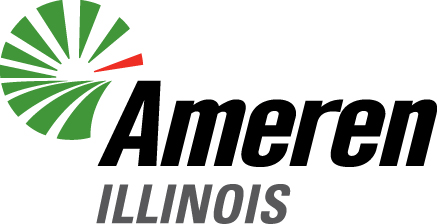
In December 2023, Ameren Illinois will work with Wright Tree Service to conduct maintenance along the "powerline trail" in Busey Woods. Some trees and branches that pose a threat to the power lines will be removed. Ameren has consulted with Urbana Park District staff to limit the impacts on Busey Woods habitat.
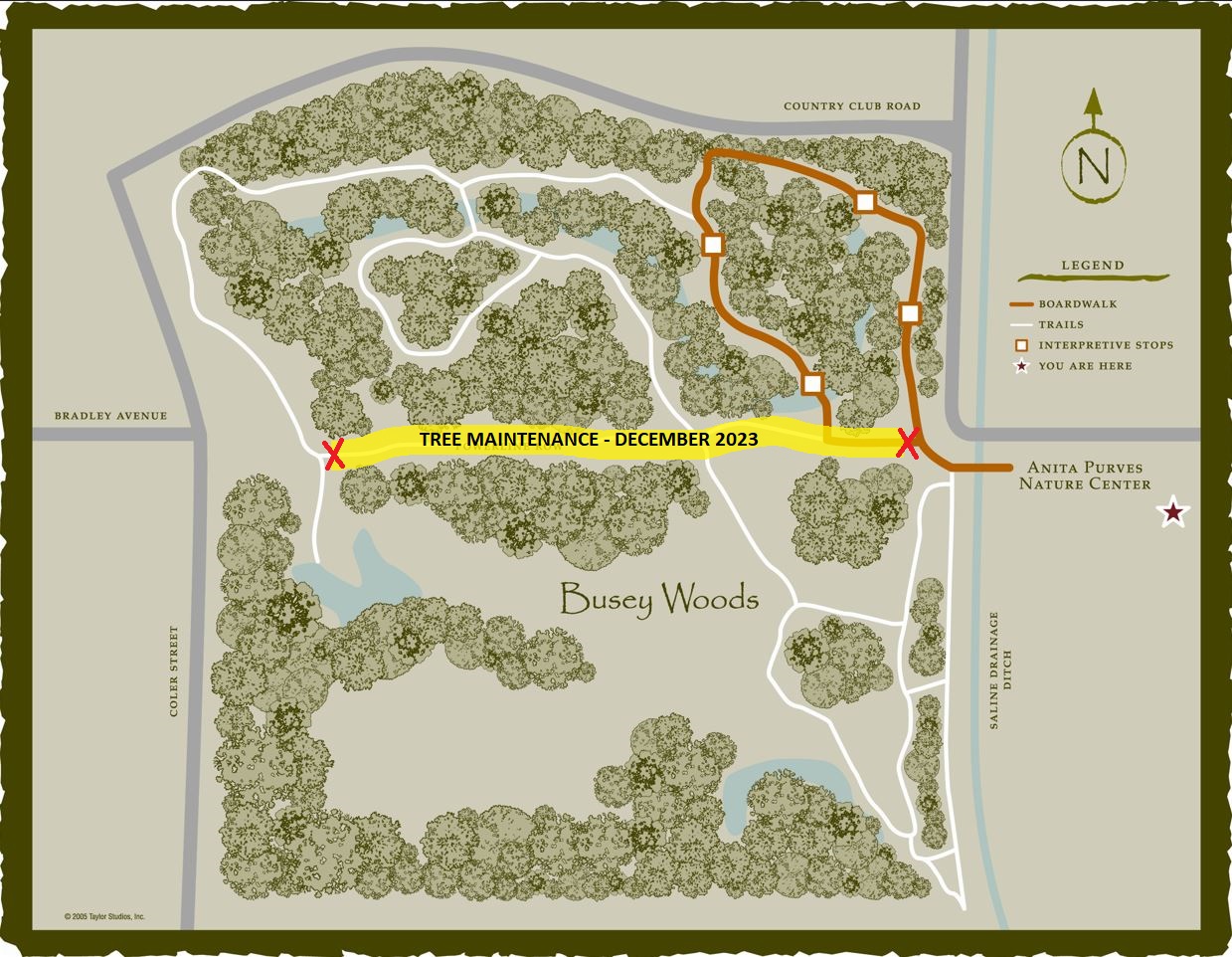
Habitat Garden Restoration at Anita Purves Nature Center
Renovations to the habitat gardens in front of the nature center are underway and will be ongoing through spring 2024. A greater variety of native plants is being replanted. This will provide food and homes for diverse wildlife and will offer more opportunities for teaching and learning about the importance of native species!
Before Restoration:
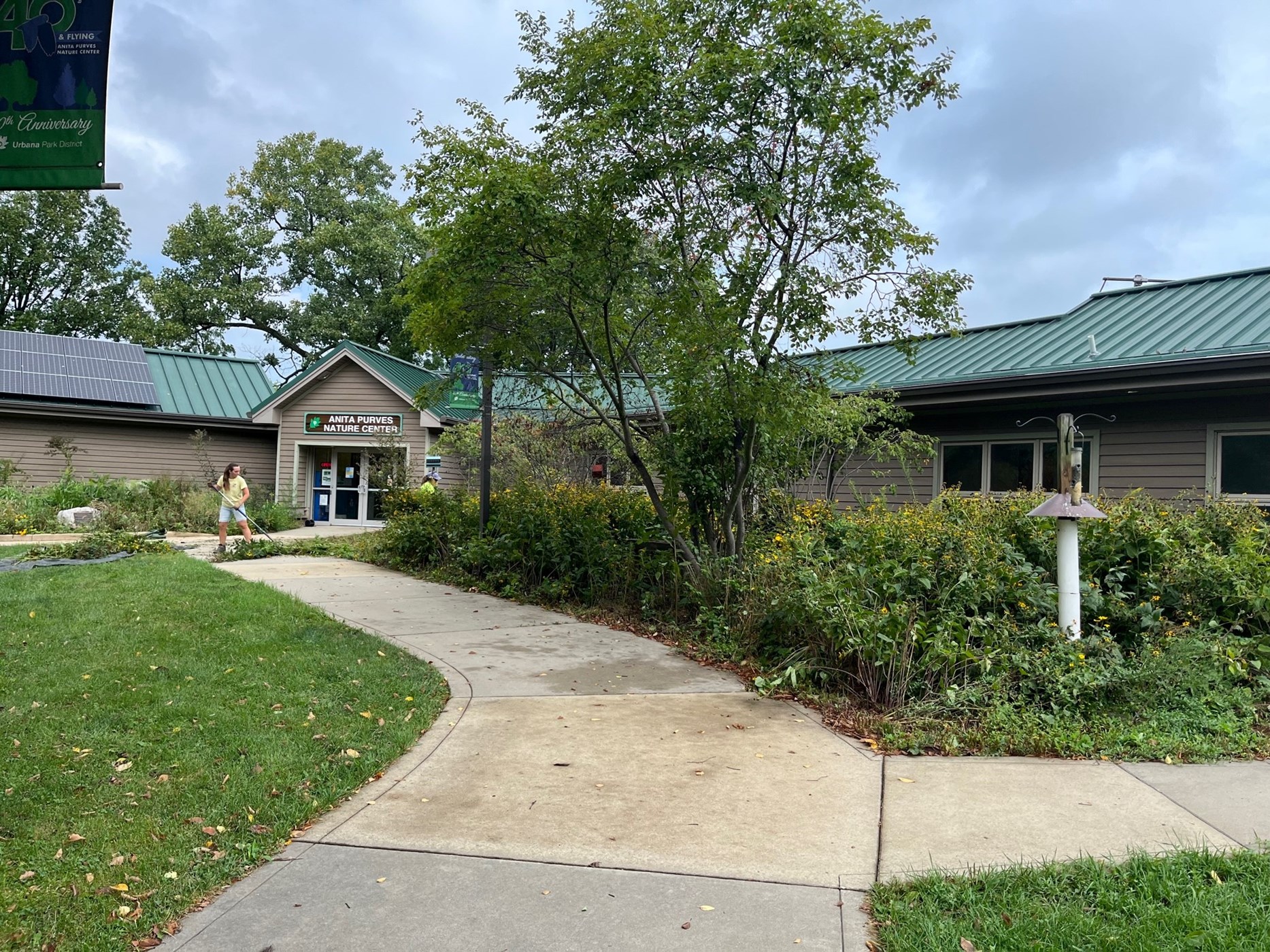
Before restoration, the habitat gardens were getting overgrown with thistle and Canadian goldenrod, which was choking out more desirable species that support a greater variety of wildlife.
Initial work has included removal of the dead and dying serviceberries, preservation of desirable plants, and clearing of unwanted herbaceous perennial plants. Cardboard and mulch has been laid down to kill weeds over the winter. A path is also being installed which will allow visitors to walk through the renovated garden and staff to better access the bird feeders.
After Restoration:
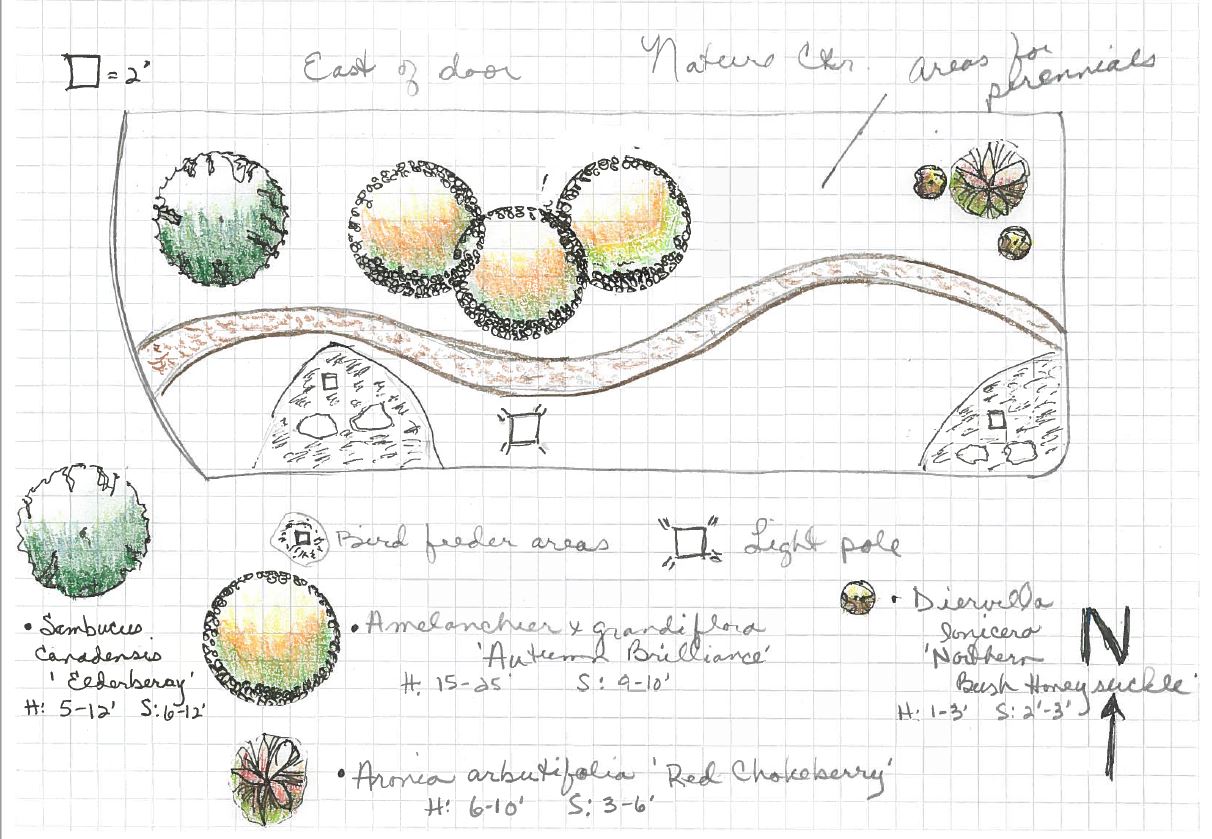
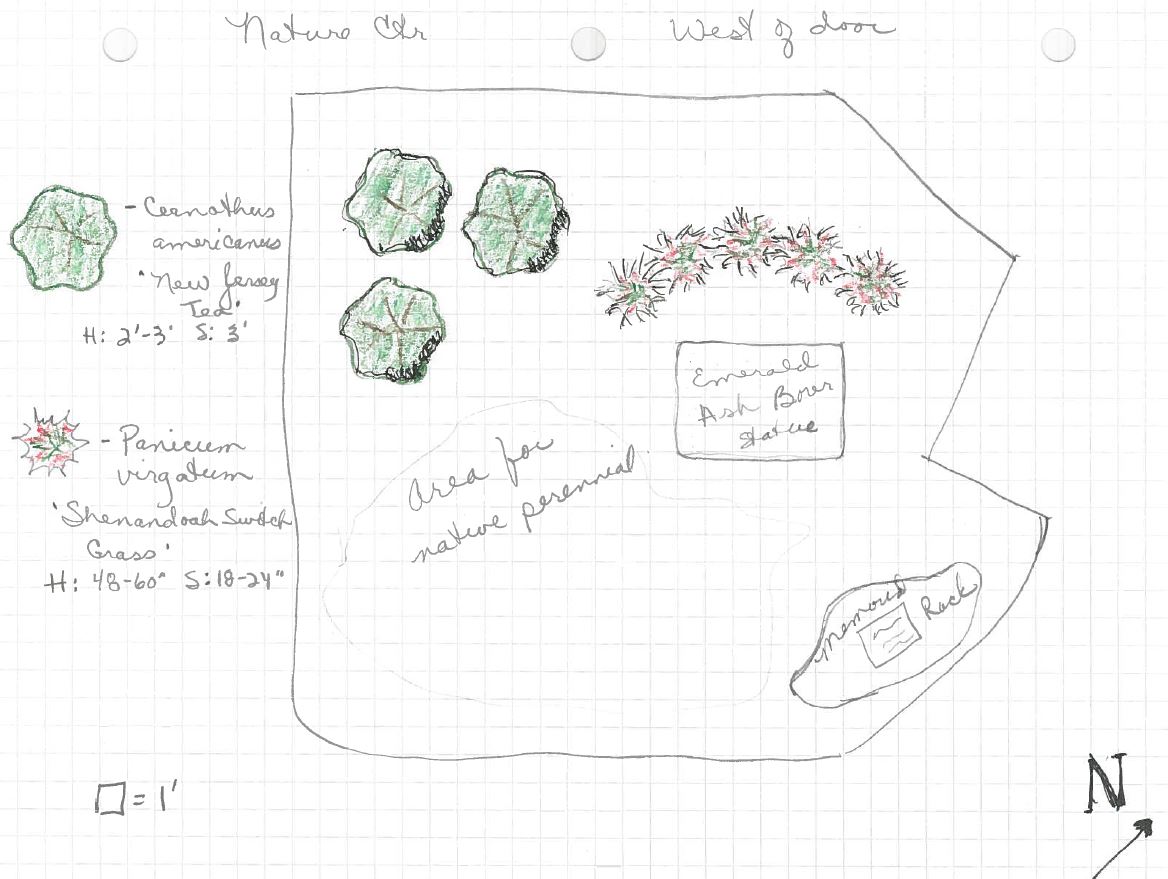
After restoration, plantings will include a variety of shrubs that provide food for birds: serviceberry, elderberry, chokeberry, New Jersey tea, and more!
Crystal Lake Shoreline and Island Restoration
Work toward the Crystal Lake Rehabilitation Project is ongoing in 2024. Part of the project included removing invasive trees and shrubs from the lake shoreline and the north island.
Before Restoration:
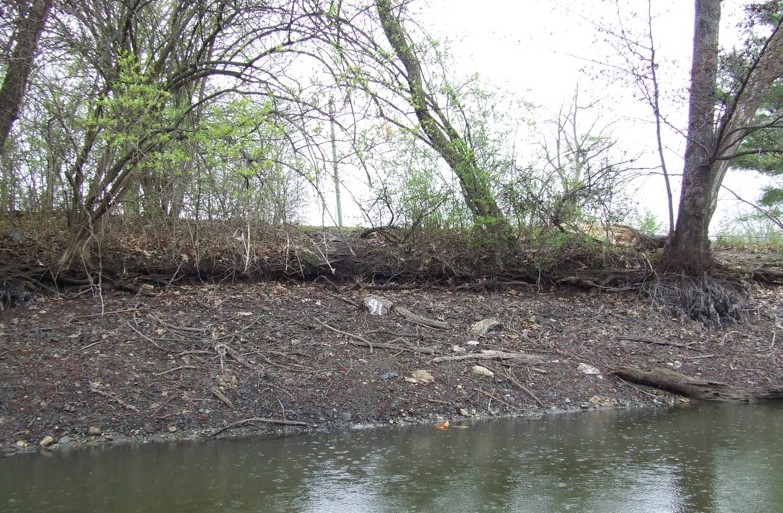
Before restoration, the shorelines of Crystal Lake included many low-quality, invasive shrubs and trees.
These locations were then replanted with beautiful native plants that are more beneficial to wildlife. More than 60 trees and 300 shrubs were planted along the shoreline, and an additional 400+ shrub “live stakes” (sticks cut from living shrubs that will grow into new shrubs) were planted on the north island. Both locations were also planted with native wildflowers and grasses.
After Restoration:
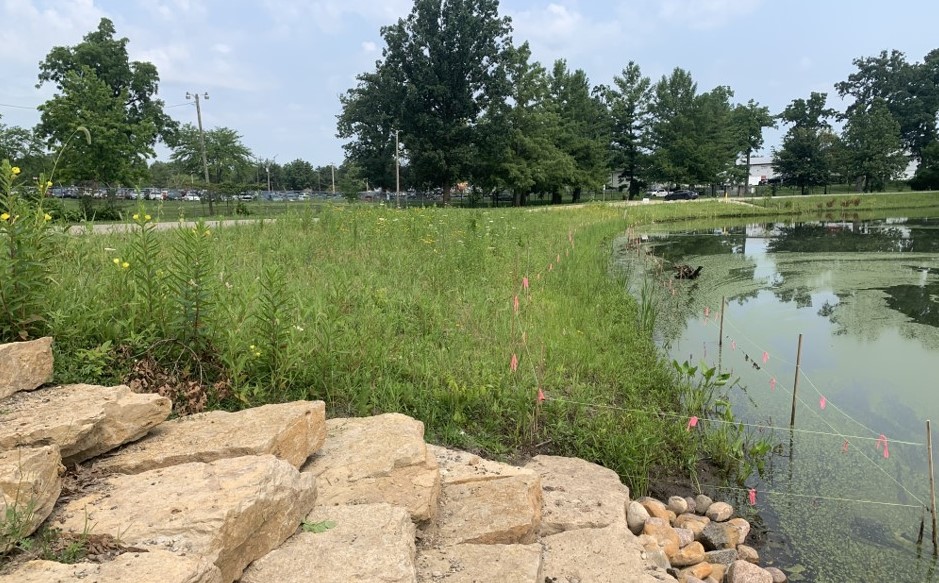
After restoration, the Crystal Lake shoreline is growing new wildflowers and other plants that are beneficial to wildlife and pollinators.
More shrub live stakes were planted than will survive, so the landscape contractor is expected to return and replant as needed. The contractor also continues to monitor the grass, wildflower, tree, and shrub plantings and will replant as needed through 2023.
Saline Stream Restoration Project at Crystal Lake Park
In 2002, the University of Illinois and the Urbana Champaign Sanitary District mistakenly released ammonia into the Saline Stream, which resulted in the deaths of many fish and other aquatic life. In compensation, the Illinois Department of Natural Resources partnered with the Urbana Park District in 2020 on this stream restoration project. (The Crystal Lake Project is one of several compensatory projects that received funding.) This project included installations of two types of features that increase the variety and availability of fish habitats:
- Rock riffles are the shallower, faster moving sections of a stream where rocks break the water surface. Riffles increase oxygen in the water, which fish and aquatic insects breathe. They also provide places for the insects to live, and they become food for the fish.
- Current deflectors are structures that are installed on the stream banks to locally reduce the width of the stream. This increases the flow of the water in the center of the stream, cleans the habitat, and attracts aquatic insects and spawning fish. It also causes the formation of pools of water that provide resting and feeding habitat for juvenile and adult fish.
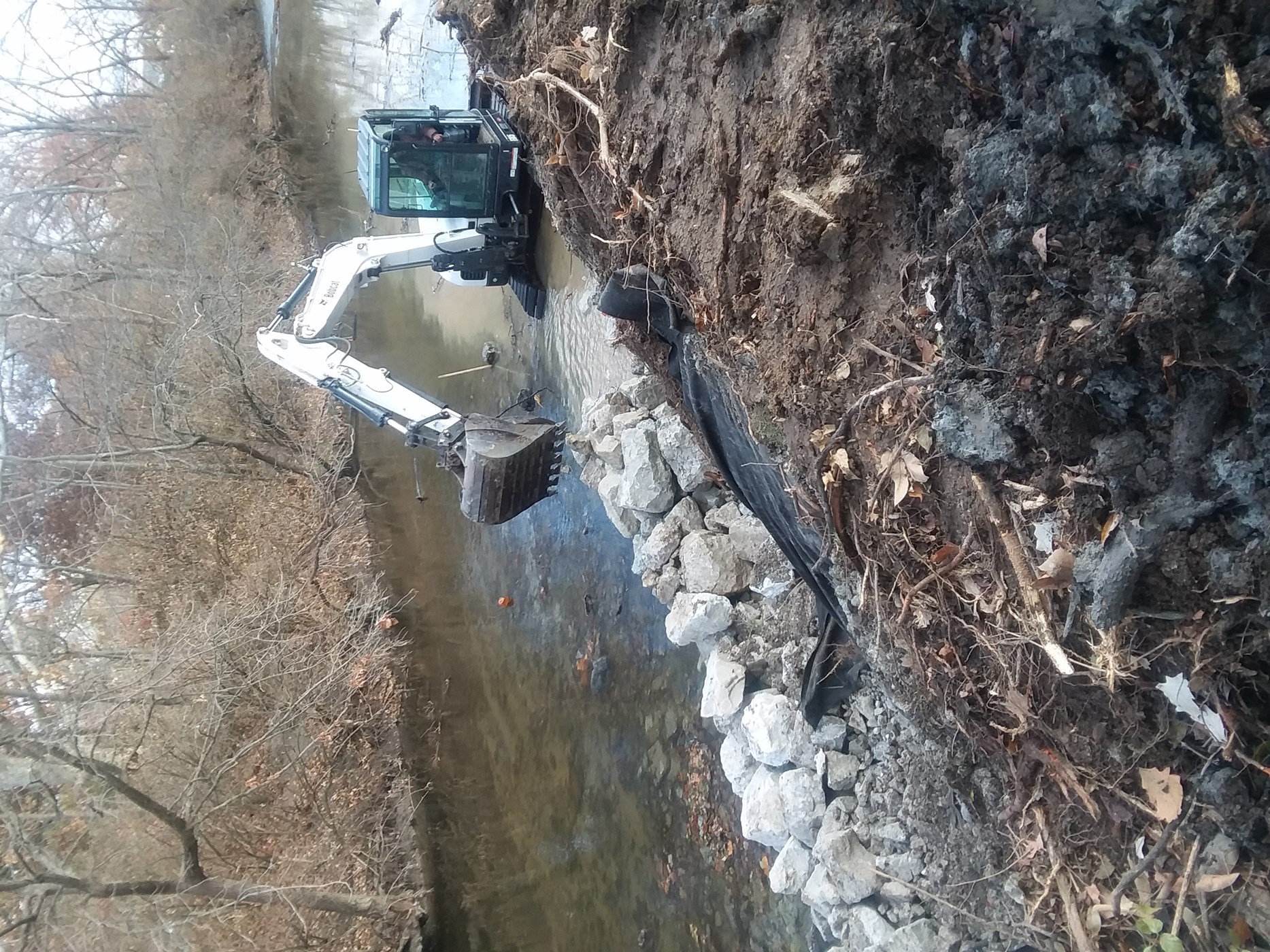
During the Saline restoration project, rocks were added to the creek to stabilize the steam banks and provide habitat for fish.
The project also reshaped areas of badly-eroded stream slopes that were collapsing into the creek. The stabilized slopes were cleared of invasive species and replanted with deep-rooted native plantings which will prevent future erosion. Tree plantings are planned for the fall of 2022 now that the bank is vegetated and stabilized.
Plant Management in Natural Areas
Restoring natural areas to serve as high-quality habitats takes a lot of ongoing work! Restoration and maintenance projects often include removing overcrowded or unwanted plants and trees, like bush honeysuckle and European alder, which don’t belong in Illinois prairies and woodlands. At times, restoration activities may temporarily limit your access to some natural areas.
Before Restoration:
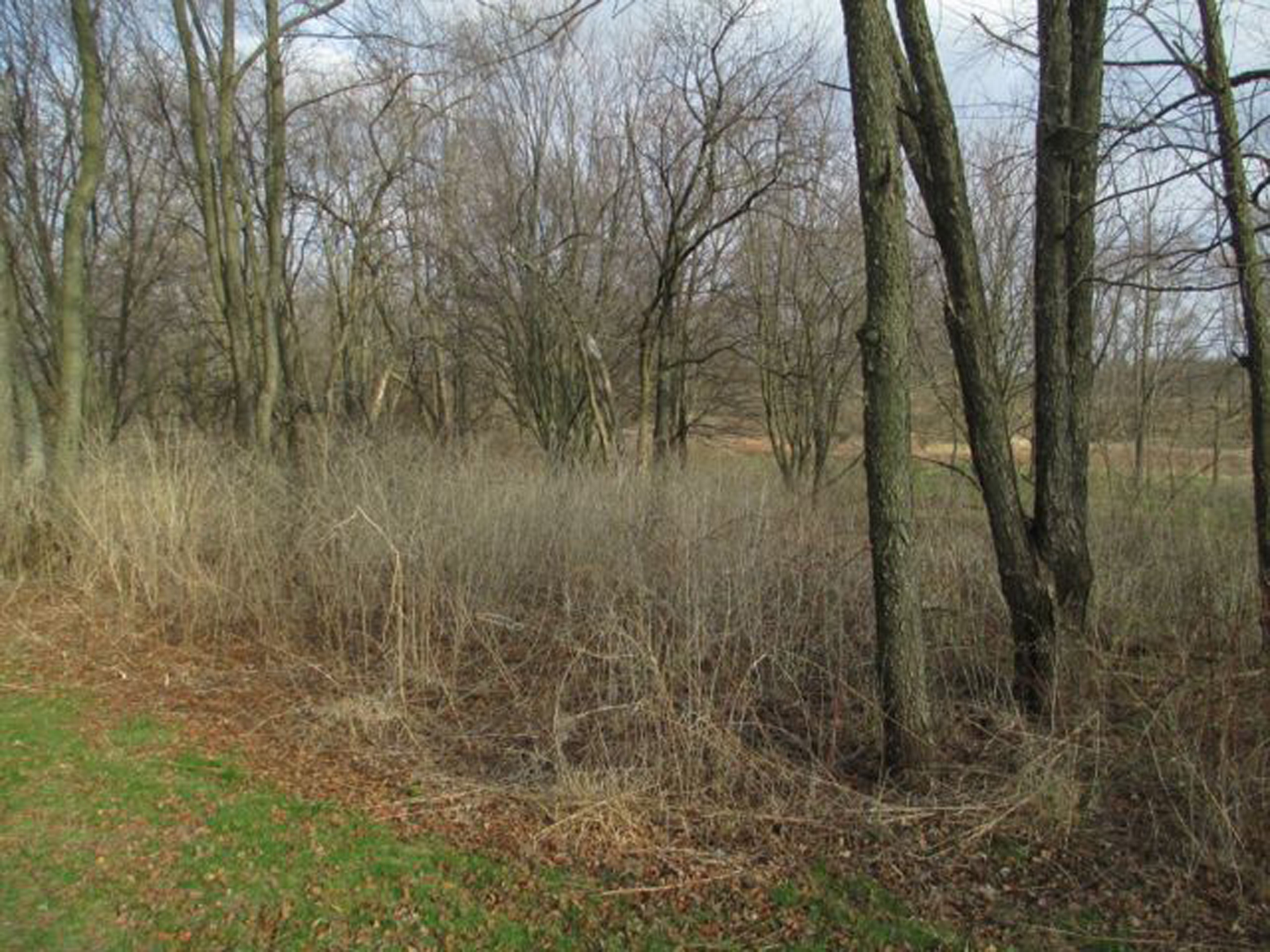
The Hickman Wildflower Walk at Meadowbrook Park was overgrown with invasive plants, which compete with other plants for sunlight and other resources.
Clearing of invasive plants involves mechanical removal with hand tools or heavy equipment as well as the conservative and targeted use of herbicides. Low-impact and ecologically-based alternatives are always the first option.
During Restoration:
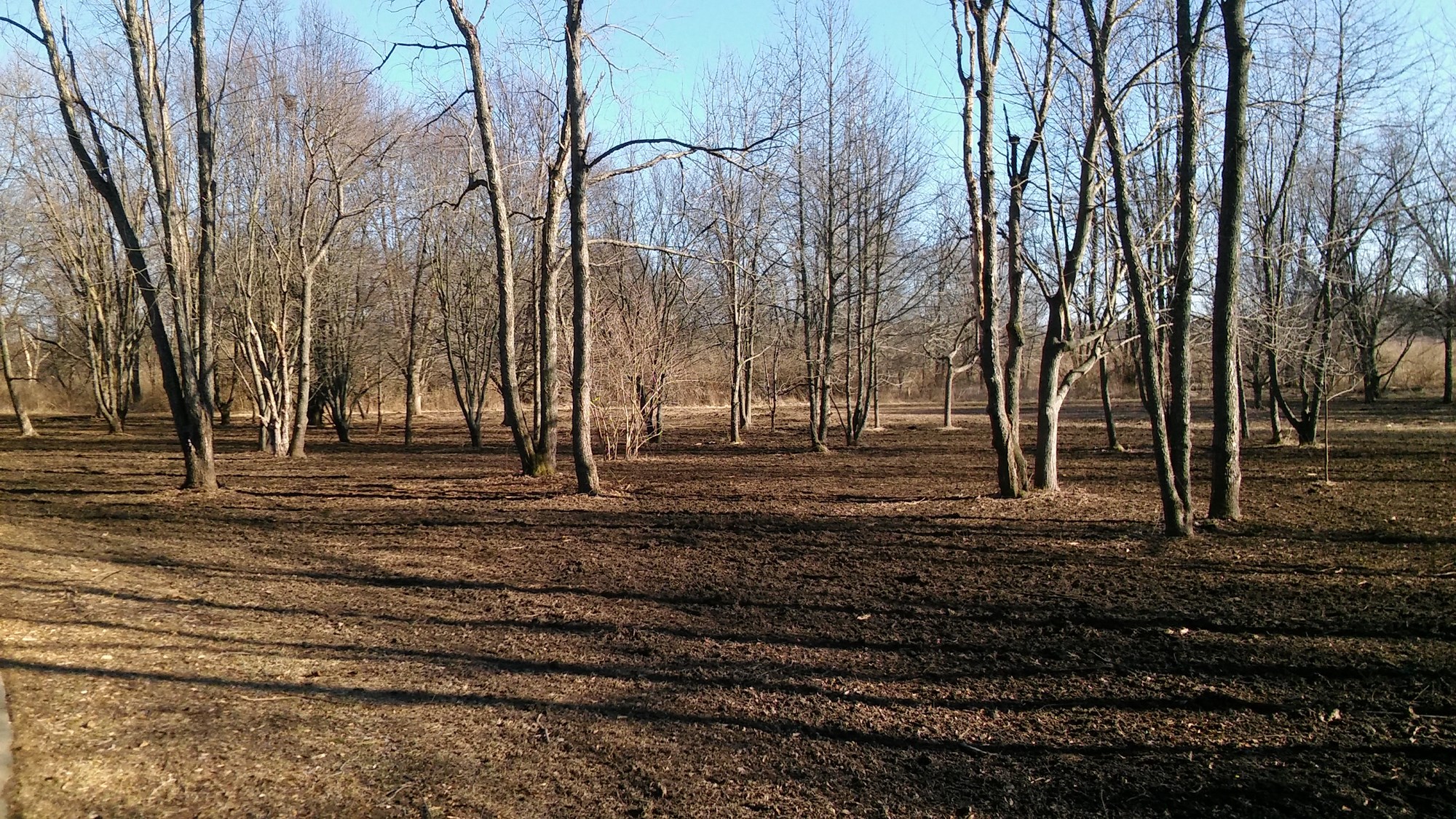
During restoration, invasive plants were removed from the Hickman Wildflower Walk at Meadowbrook Park.
After the unwanted plants have been removed, native flowers and plants once again have space to thrive. If re-seeding or planting is done, careful selection from local sources is important, and sometimes seeds are hand-collected from other well-established natural areas. The final result is a greater variety of plant life, which then supports a wide array of other life forms and creates a healthy and more resilient habitat.
After Restoration:
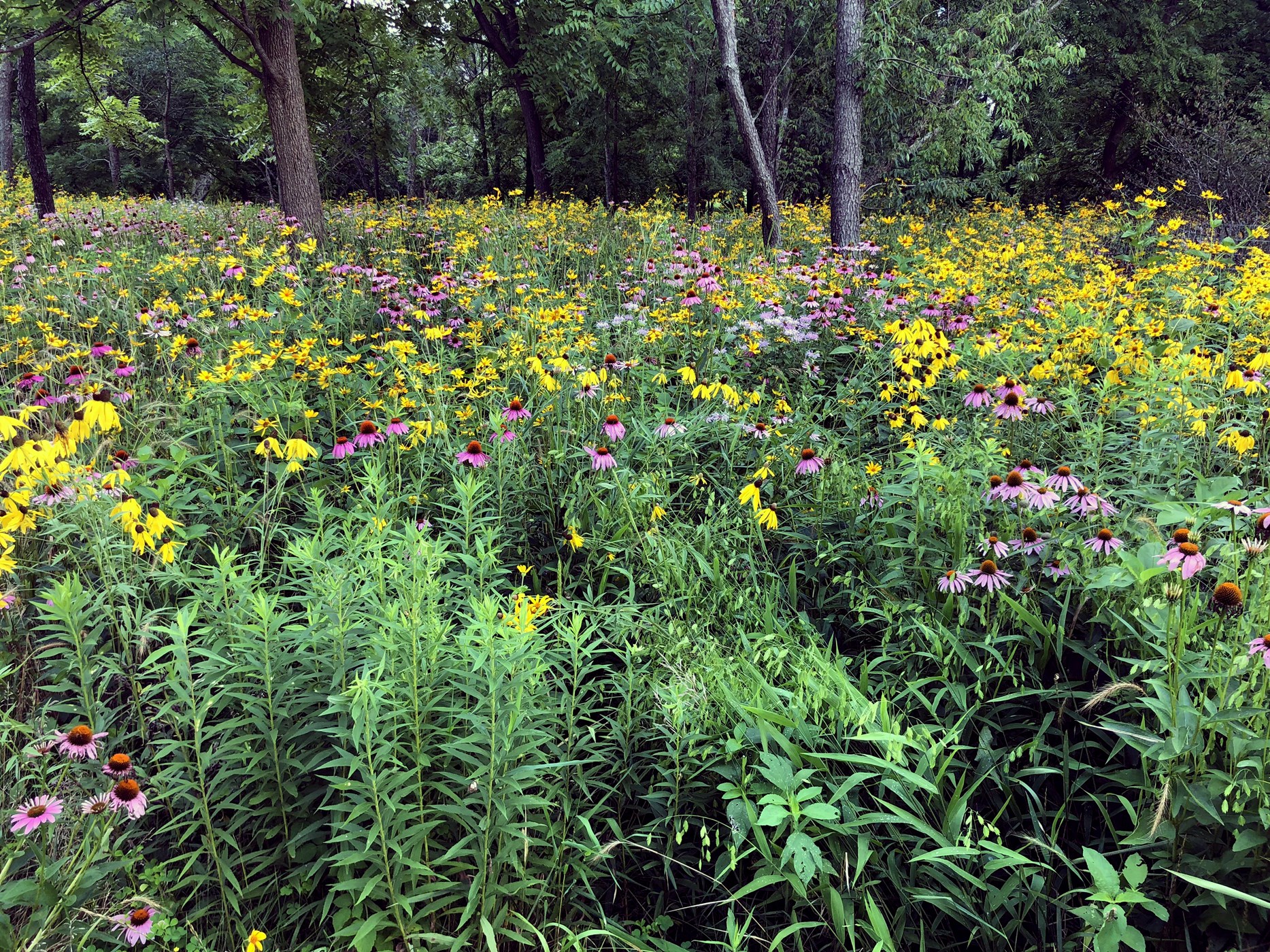
After restoration, the Hickman Wildflower Walk at Meadowbrook Park is home to many different types of native plants that support pollinators, birds, and other wildlife.
Healthy habitats offer many services to humans and wildlife alike such as:
- Air and water purification
- Supporting pollinators like bees and butterflies, which are important for agriculture and home gardens alike
- Erosion control to conserve and build-up healthy soils
- Flood control during heavy rain events
- Food and homes for birds and other wildlife
- Storage of excess carbon dioxide, which slows down climate change
Prescribed Burning in Natural Areas
The Urbana Park District burns select portions of its fire-dependent natural areas each year with the assistance of trained staff and volunteers. A prescribed burn must take place under strict weather, wind, and site-use conditions, so burns are often scheduled with short notice. The Environmental Protection Agency issues permits for each of these burns, and the Urbana Fire Department is always informed.
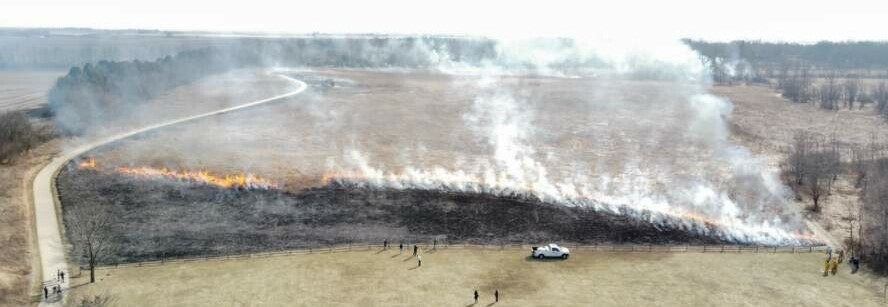
Aerial view of a prescribed prairie burn at Meadowbrook Park on March 9, 2022
Fire is an important management tool for preserving and restoring prairies and woodlands, which historically developed in the presence of periodic fire. Fire discourages the growth of invasive species, and prairie plants actually grow more vigorously in areas that are occasionally burned! Prescribed fires help create beautiful and more diverse prairie habitat for years to come.
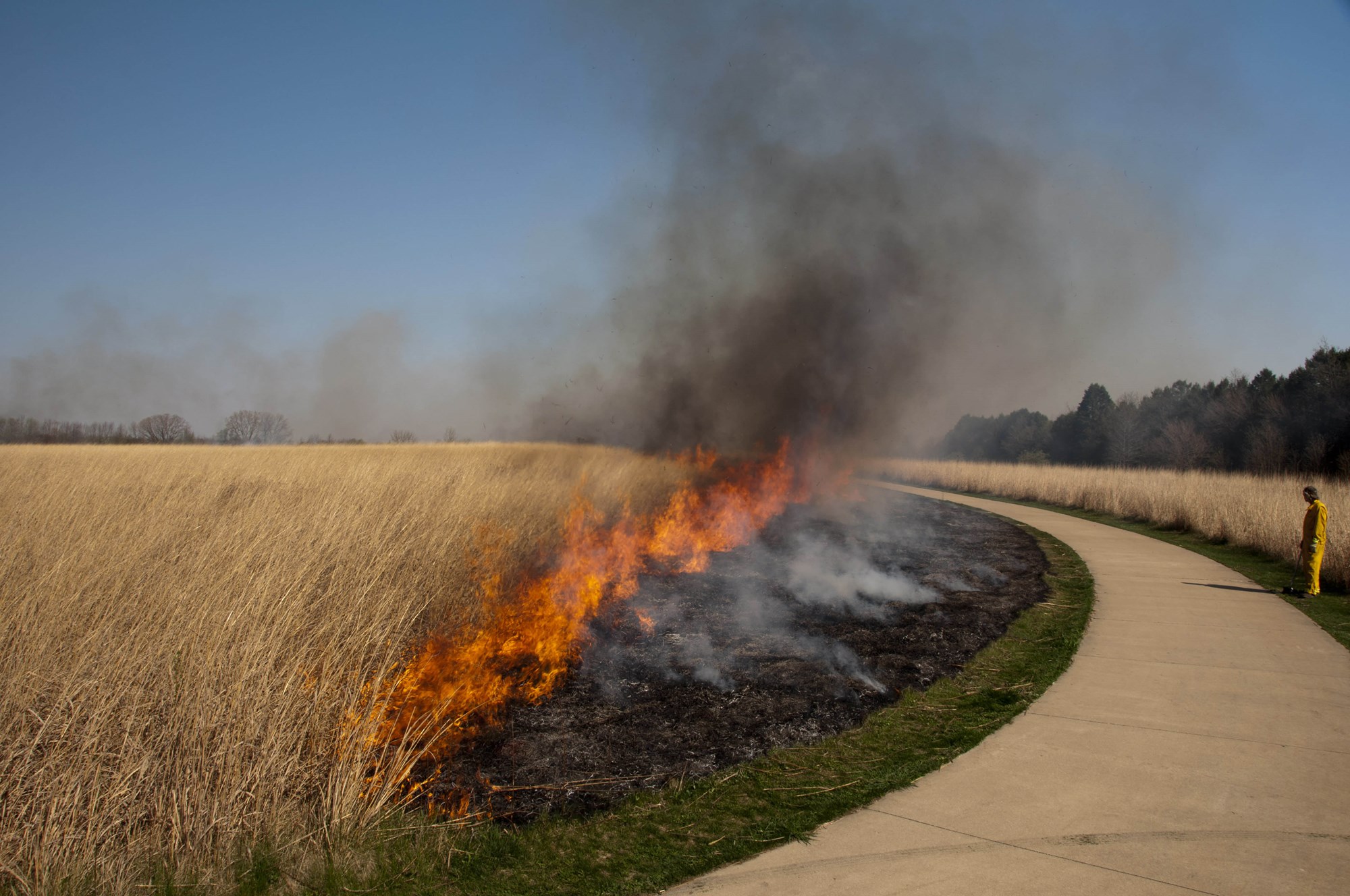
Prairie fires burn quickly and cleanly.
Prairie fires burn very quickly and cleanly, and the unburned areas serve as a refuge for wildlife on-site. Prescribed burn areas will be closed to visitors before and during the burn. Volunteers and staff will be available to help guide park visitors clear of the area.
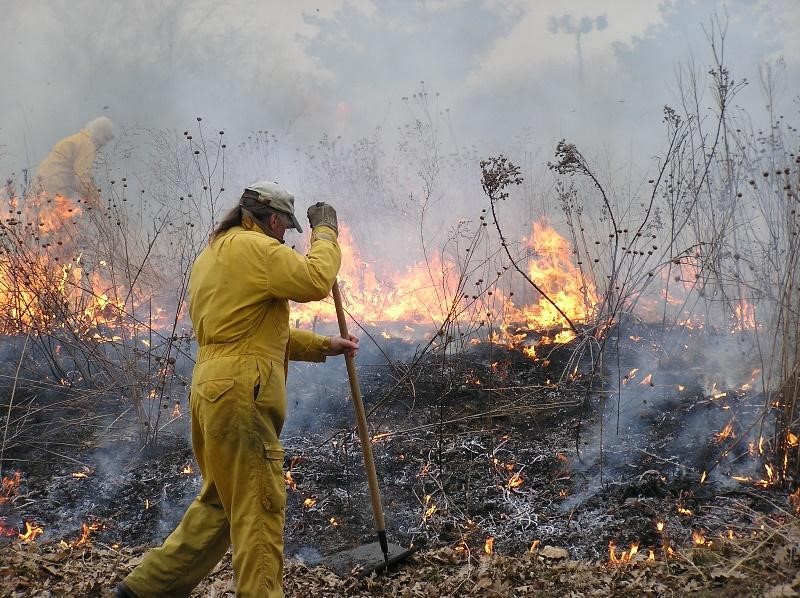
Staff and volunteers are present to monitor and control for safety throughout any prescribed burn.
For more information, call Derek Liebert at 217-344-9583 or Savannah Donovan at 217-384-4062.
Offer Your Support for Natural Areas
- Volunteer! You can volunteer to help with projects and ongoing maintenance of park district natural areas! Find more information about volunteer opportunities here: https://www.urbanaparks.org/get-involved/volunteer/
- Wednesday Workdays take place from 9-11am each week at varying locations, which are announced weekly. During these sessions you might plant trees or flowers, collect or scatter seed, remove nuisance plants, maintain trails, and pick up trash as needed. Email Matt Balk at mjbalk@urbanaparks.org to join the email list for location announcements.
- Clubs, scouts, and other groups of 8 or more people may request their own private workday by calling 217-384-4062.
- Donate! You can make a monetary donation to the Urbana Park District to support natural areas. Find more information about donation opportunities here: https://www.urbanaparks.org/get-involved/donate/
- Join our team! Seasonal and year-round employment opportunities are available. Find a list of open positions here: https://www.urbanaparks.org/jobs/
Resources for More Information